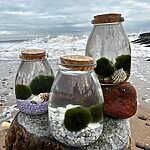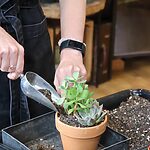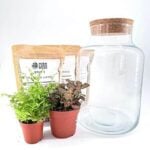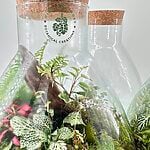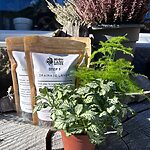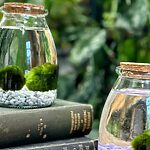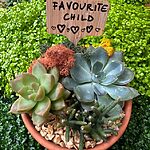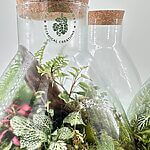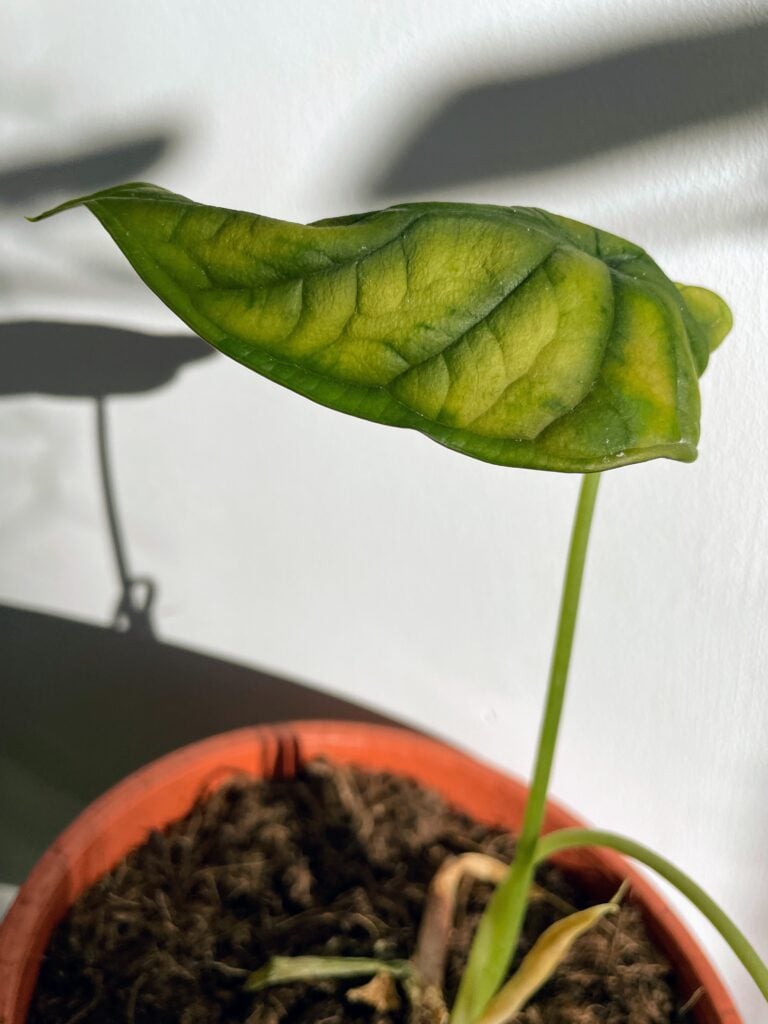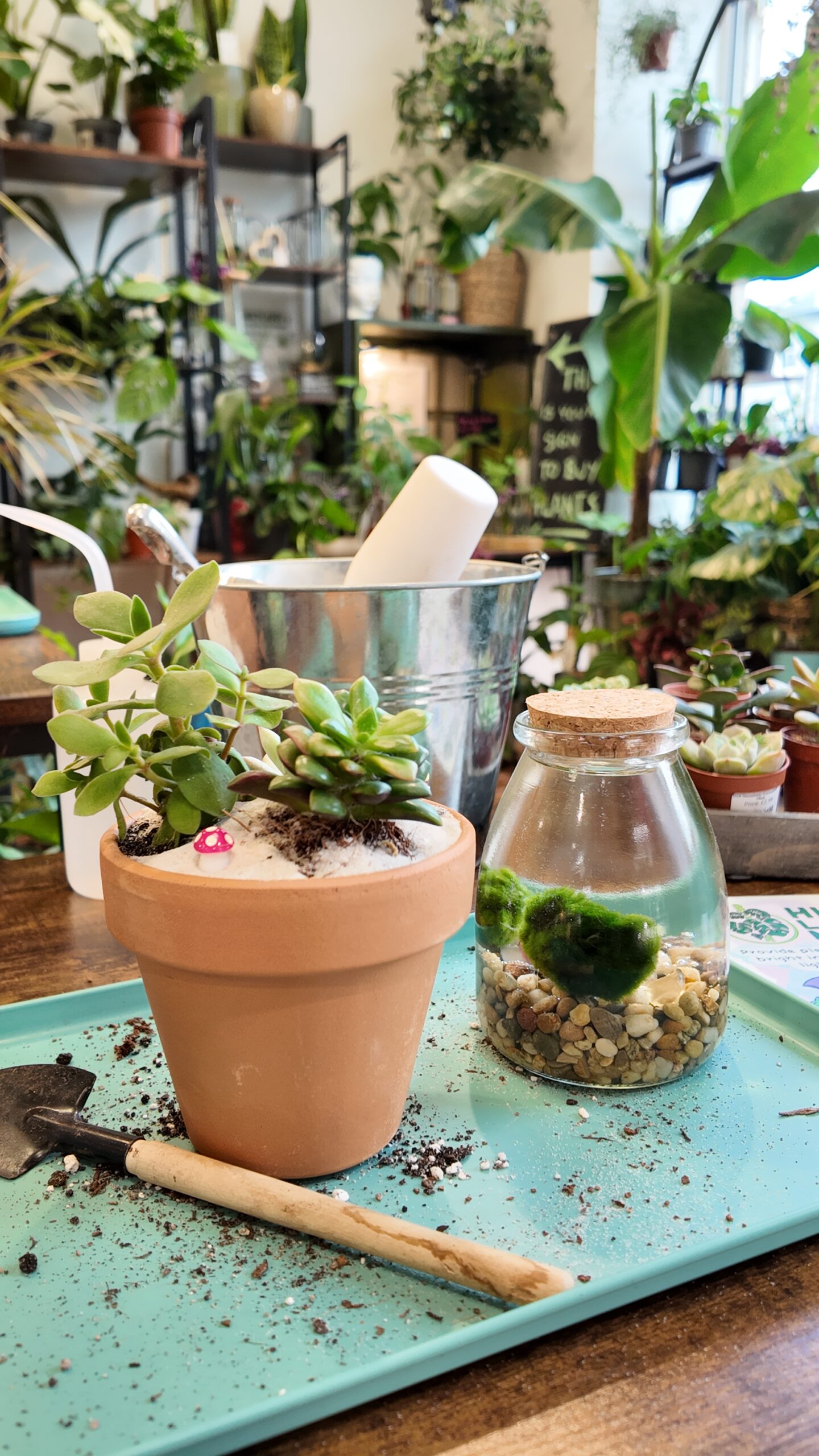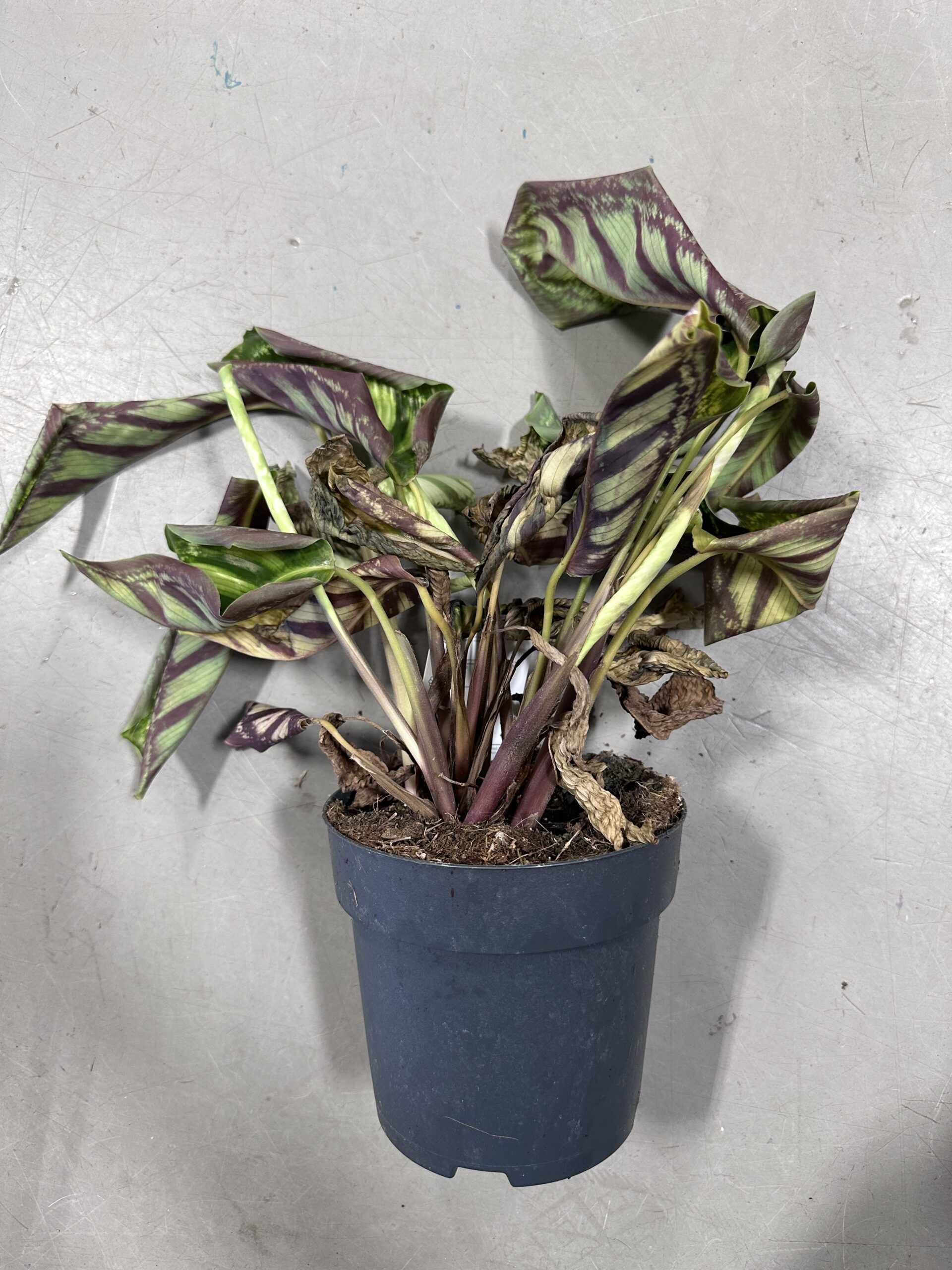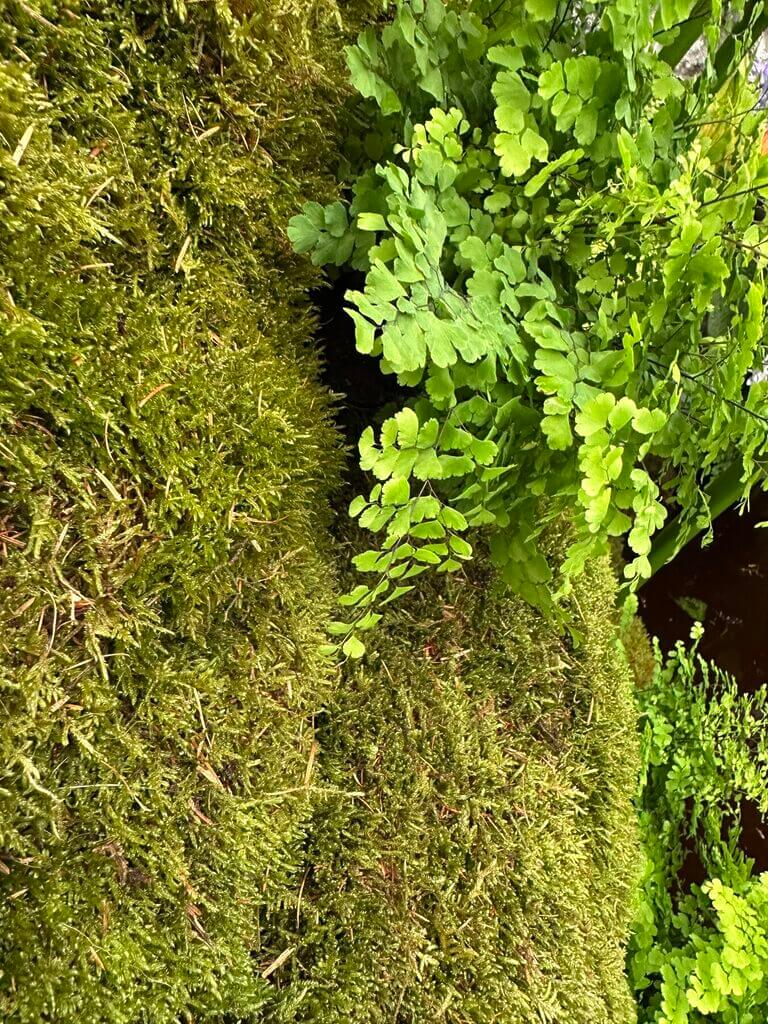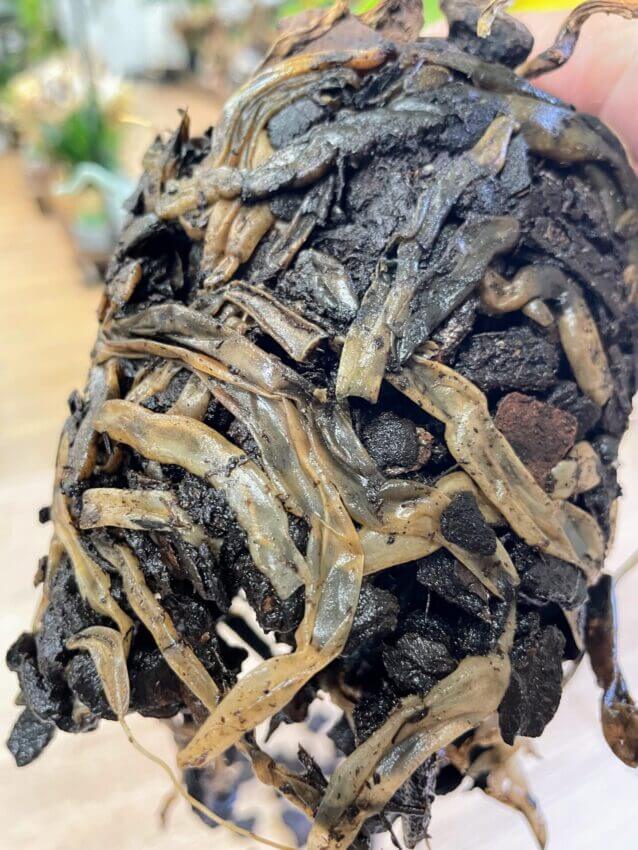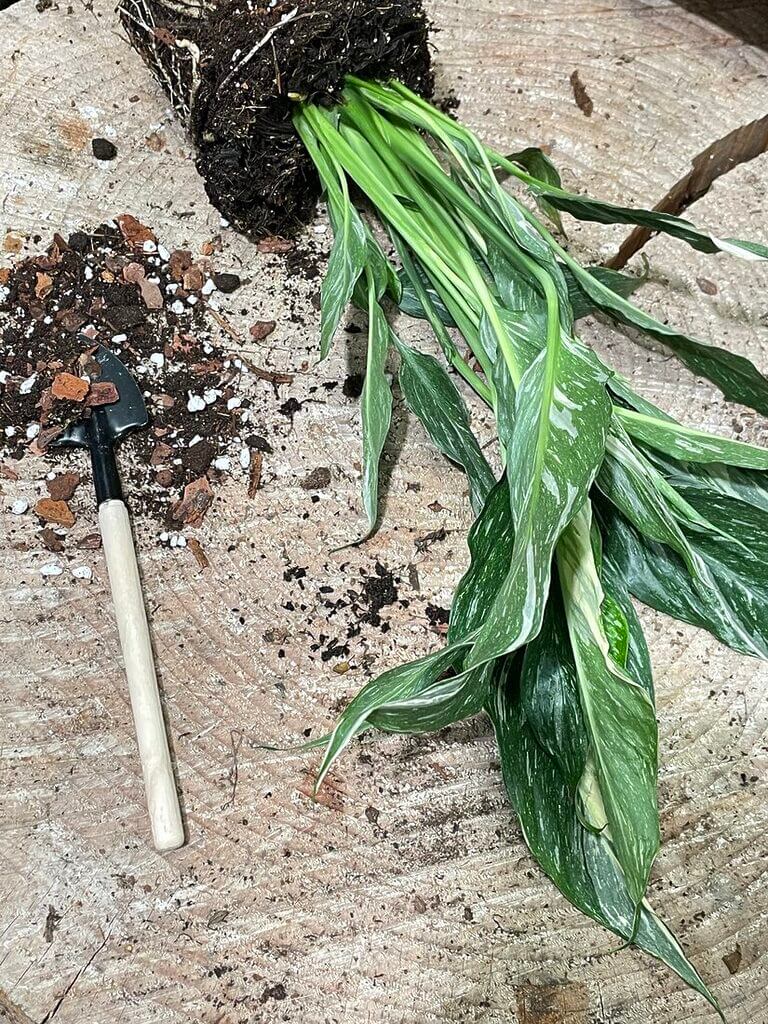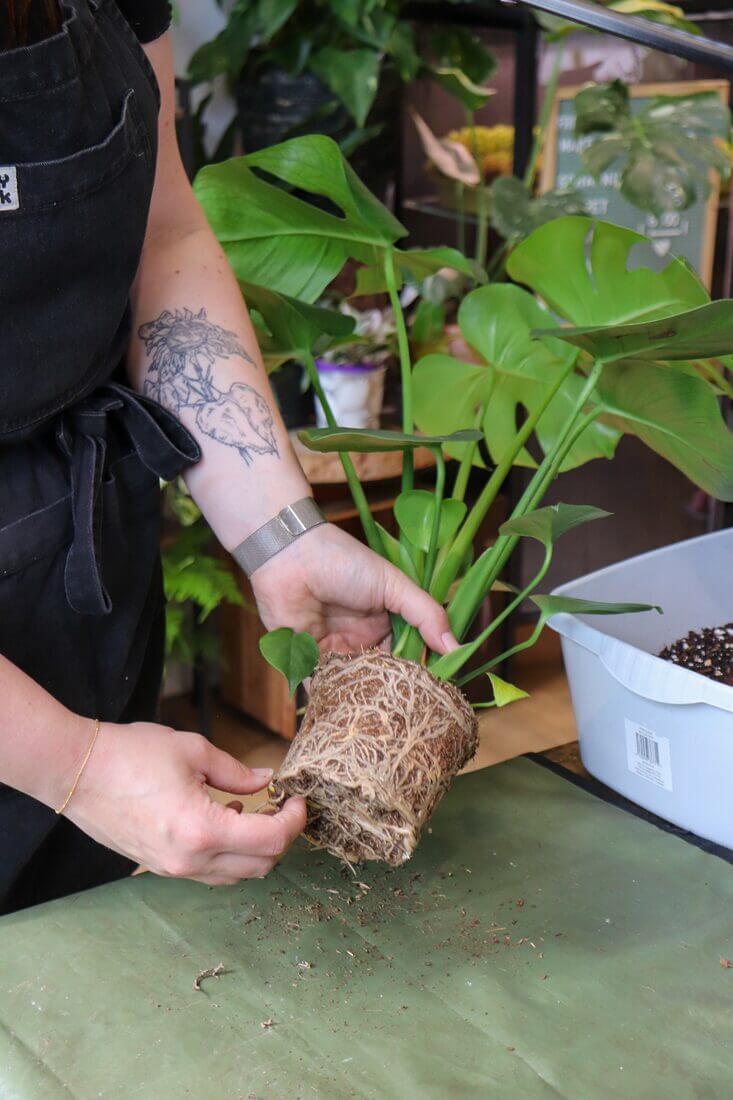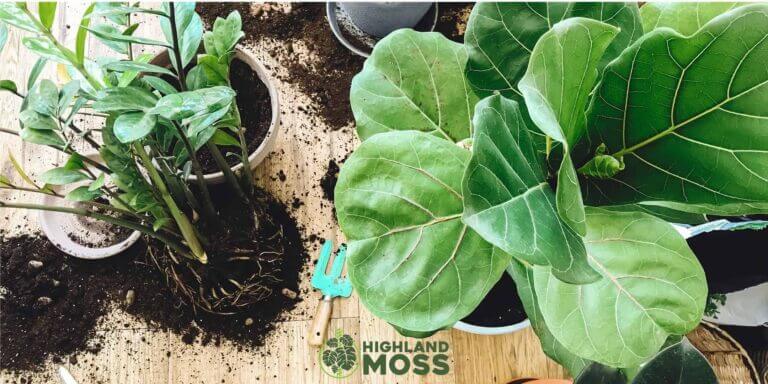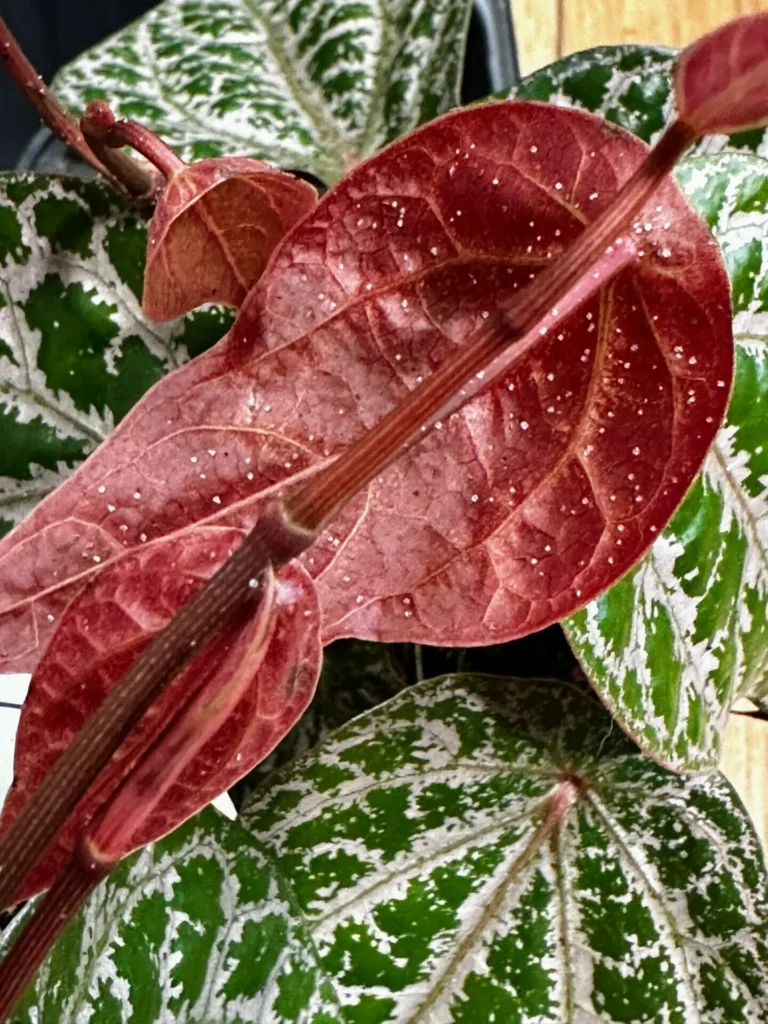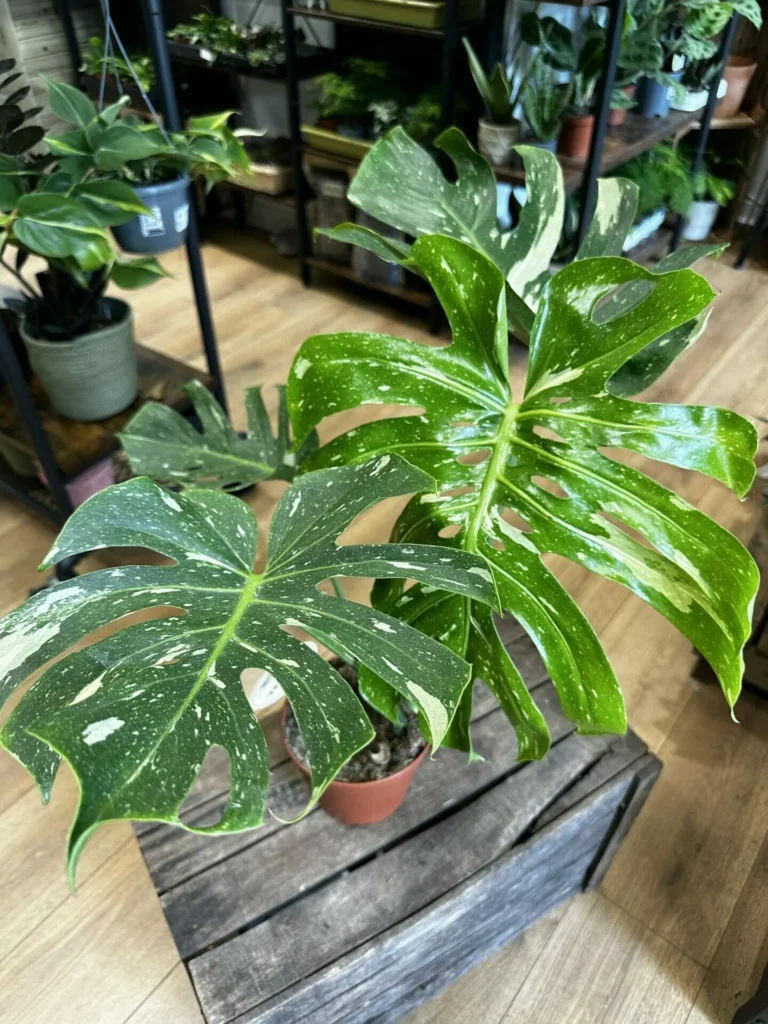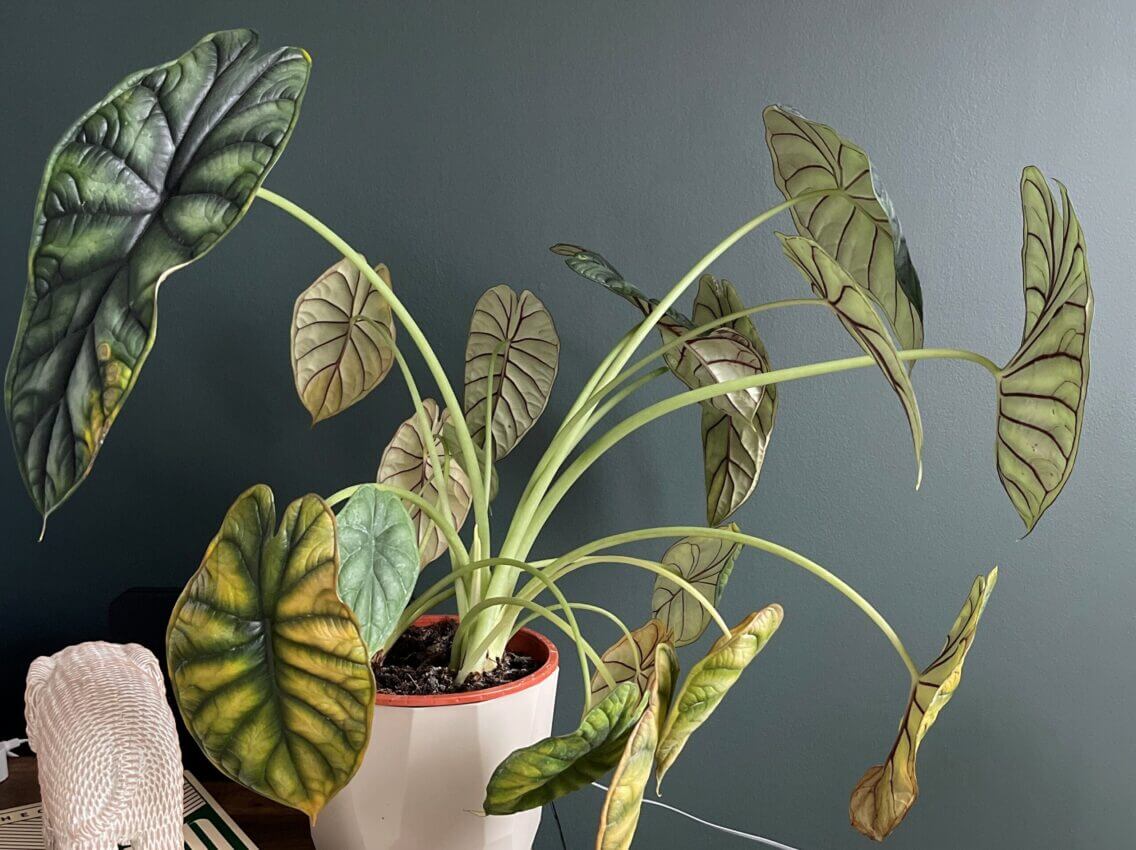
What Is Dormancy
Plants dormancy is a natural state of reduced activity or metabolism that some plants enter during certain times of the year, (usually during winter but not always) typically in response to changes in temperature or light levels. During dormancy, a plant may stop growing, or its growth may slow down significantly. It may also shed leaves or stop producing flowers.
Dormancy is a natural part of a plant’s life cycle and is usually not a cause for concern. Actually, it is a way for the plant to restore energy and resources during periods when conditions are not favourable for growth. In the case of houseplants, dormancy may be induced by the reduced light levels and cooler temperatures that are common in homes during the winter months.
Symptoms Of Dormancy
Alocasia plants, also known as elephant ears, are tropical plants that typically go through a period of dormancy during the winter months. During this time, the plants may exhibit one or a number of different symptoms, including
Reduced growth
Alocasia plants tend to slow down their growth rate during dormancy. This may result in smaller leaves or a reduction in the number of new leaves produced.
Yellowing leaves
The leaves of an Alocasia plant may turn yellow during dormancy. This is normal and is a sign that the plant is conserving energy.
Leaf loss
Alocasia plants may lose some of their leaves during dormancy. This is also normal and is a natural part of the plant’s life cycle.
Stem shrinkage
The stem of an Alocasia plant may appear to shrink during dormancy. This is a sign that the plant is conserving energy and is not a cause for concern.
Dormancy Stages
There are a few stages of dormancy that Alocasia plants may go through:
- Preparatory dormancy: This is the stage where your plant starts to slow down its growth and prepare for the dormant period. The leaves may yellow and the plant may stop producing new growth. Symptoms may look like other issues including pests, overwatering etc.
- Full dormancy: This is the stage where the plant is fully dormant and has stopped growing altogether. The leaves may turn brown and fall off, and the plant may appear to be dead, is easy to give up at this point but please do not do it!
- Break dormancy: This is the stage where the plant starts to come out of dormancy and begins to grow again. New leaves may appear and the plant may start to look more vigorous. Our favourite part of dormancy usually happens early or mid-spring when the days are longer and temperatures raise.
Issues Which Look Like Dormancy
There are a number of different issues that can cause an Alocasia plant to exhibit symptoms that may be mistaken for dormancy. Some possible causes include:
- Overwatering: Alocasia plants are sensitive to excess moisture and can easily become waterlogged. If the soil is consistently wet, the plant’s leaves may turn yellow, droop, and eventually, die.
- Underwatering: Alocasia plants also need a consistent supply of moisture to thrive. If the soil is allowed to dry out completely, the plant’s leaves may wilt and turn yellow.
- Lack of light: Alocasia plants need bright, indirect light to grow. If the plant is not getting enough light, its leaves may turn yellow and it may stop growing.
- Pest infestation: Alocasia plants can be prone to pests such as aphids, mealybugs, and scale insects. These pests can cause the plant’s leaves to yellow, curl, or die.
- Nutrient deficiency: Alocasia plants need a consistent supply of nutrients to grow. If the plant is not getting enough of certain nutrients, it may exhibit symptoms such as yellowing leaves or reduced growth.
It is important to carefully observe your Alocasia plant and diagnose the cause of any unusual symptoms. With the proper care and attention, you can help your plant recover from any issues and continue to thrive.
If you have an unhappy plant and need advise visit our Plants Hospital, fill in the ”patient” form and we will get back to you with all information on what is wrong with your plant and how to fix it. The plant hospital service is free of change and we already helped 100s plants!
How To Prevent Dormancy
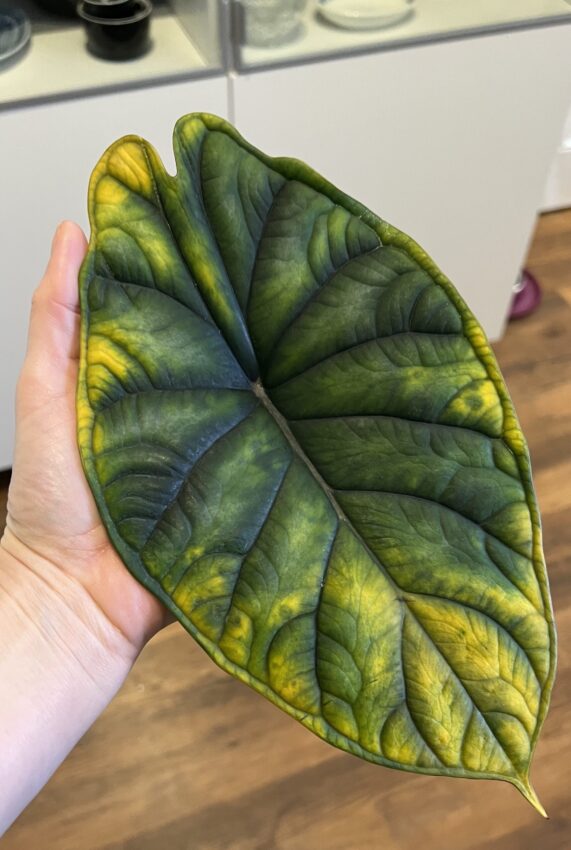
To prevent dormancy in Alocasia plants, it’s important to provide them with the right conditions.
This includes keeping them in well-draining soil and watering them regularly but not allowing the soil to become waterlogged. They also prefer a humid environment, so misting the leaves or using a humidifier can be helpful.
Alocasia plants also benefit from regular fertilization, using a balanced fertilizer once a month during the growing season.
Alocasia Dormancy Care
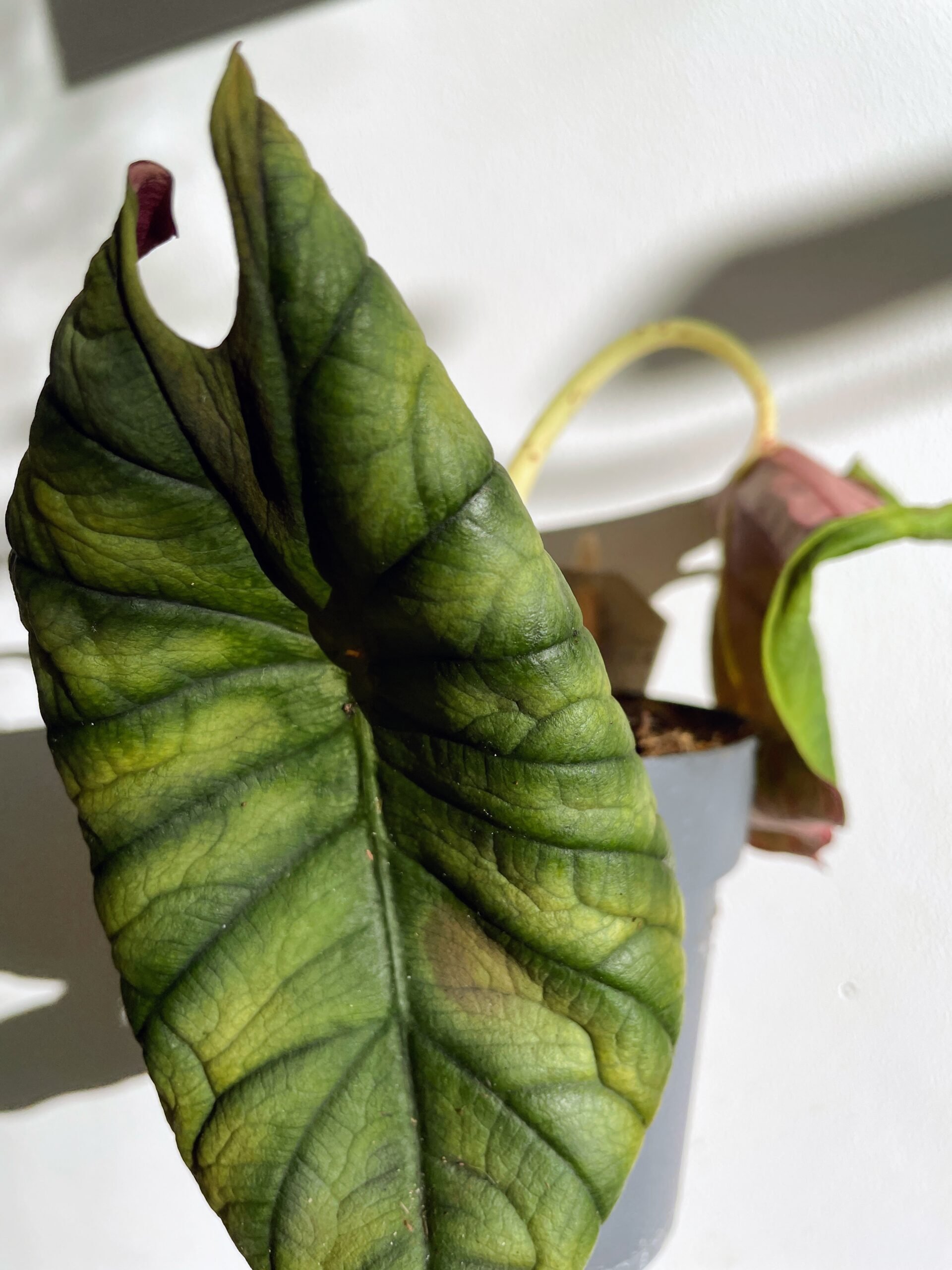
Reduce watering
Alocasia plants do not need as much water during dormancy. Allow the soil to dry out slightly between waterings and reduce the frequency of watering.
Provide bright, indirect light
Alocasia needs bright, indirect light to grow, but they can be sensitive to direct sunlight which may burn their leaves. A south- or east-facing window is a good location for an Alocasia plant during the winter months.
Avoid fertilizing
Alocasia plants do not need much fertilization during dormancy. In fact, over-fertilizing can be harmful to the plant. It is best to hold off on fertilizing until the plant begins to emerge from dormancy.
Keep the plant warm
Alocasia plants are tropical plants that prefer warm temperatures. Keep the plant in a location that is above 60°F (15°C) to help it emerge from dormancy more quickly.
Be patient
Alocasia usually goes through a period of dormancy each year as part of its natural life cycle. It is important to be patient and allow the plant the time it needs to rest and recharge. As the weather warms up, the plant should begin to emerge from dormancy and resume normal growth.
How To Wake Up Alocasia After Dormancy Period
- Increase watering: As the weather warms up, slowly begin to increase the frequency and amount of watering to provide the plant with the moisture it needs to grow. Water the plant thoroughly, but avoid overwatering, which can lead to root rot.
- Fertilize: As the plant begins to emerge from dormancy, it will benefit from a boost of nutrients. Use a balanced fertilizer (one with equal amounts of nitrogen, phosphorus, and potassium) at half-strength every few weeks. Do not overfertilize as it may burn roots and cause more issues.
- Provide bright, indirect light: Alocasia needs bright, indirect light to grow. Move the plant to a location that receives bright, indirect light, such as a south- or east-facing window.
- Keep the plant warm: Alocasia plants prefer warm temperatures and will grow best when kept in a location that is above 15°C (60°F). Avoid placing the plant in a drafty or cool location. Keep also away from sources of strong heat like a fireplace, should be warm, not hot!
- Be patient: It may take a while for the plant to fully emerge from dormancy. Be patient and continue to provide it with the care it needs, and it should begin to grow and produce new leaves in time.
Dos And Don’ts Alocasia Dormancy Summary
Here are some things to do and not to do when caring for an Alocasia plant during its dormant period:
Do:
- Reduce watering: Allow the soil to dry out slightly between waterings and reduce the frequency of watering.
- Provide bright, indirect light: A south- or east-facing window is a good location for an Alocasia during the winter months.
- Keep the plant warm: Keep the plant in a location that is above 60°F (15°C) to help it emerge from dormancy more quickly.
- Be patient: Allow your plant the time it needs to rest and recharge during its dormant period.
Don’t:
- Overwater: Alocasia plants are sensitive to excess moisture and can easily become waterlogged. Avoid overwatering to prevent root rot.
- Fertilize: Alocasia plants do not need much fertilization during dormancy. In fact, over-fertilizing can be harmful to the plant. Hold off on fertilizing until the plant begins to emerge from dormancy.
- Move the plant around: Alocasia plants do not like to be disturbed during their dormant period. Avoid moving the plant to a new location or repotting it until it emerges from dormancy.
- Panic: Dormancy is a natural part of an Alocasia plant’s life cycle. If the plant exhibits symptoms such as yellowing leaves or reduced growth, this is normal and is not necessarily a cause for concern.
Remember to be patient with the plant, do not add extra stress and provide the best environment. This way you will be able to either avoid dormancy or make it as easy for the plant as possible and get ready to wake up in spring to thrive!
Looking For More Knowledge
If you’re looking for more information on how to care for your plants, be sure to check out our other articles on plant care. We have articles on a wide range of topics, including how to treat common pests, how to choose the right soil and fertilizers, and how to propagate your plants. Our articles are packed with useful tips and information that can help you get the most out of your plants. Whether you’re a serial plant killer, a beginner or have your own lush jungle, there’s something for everyone. So take a look and see what you can learn!
-
Fun Kids Plant Workshops in Aberdeen – Indoor Gardening Activities at Highland Moss
Welcome to our Wee Workshops – a series of fun, educational, plant-based activities for children (aged ~4+). These are perfect for birthday parties, small group events (e.g. playgroups, afterschool clubs), or family outings. Each child leaves with their own botanical creation and a simple illustrated…
-
Results of our 2025 Customer Survey
What You Told Us: Key Takeaways from the Highland Moss Customer Survey At Highland Moss, we’re all about growing. That includes our plants, our community, and the way we do things. So earlier this year, we asked you to take part in a short survey…
-
How to Save a Dying Indoor Plant: Step-by-Step Rescue Guide
Step-by-Step Rescue Guide Not every plant starts its life in the best conditions Many houseplants from supermarkets or garden centres suffer from poor care long before reaching your home. Some are cold-damaged from sitting by shop doors, others may be overwatered by staff without proper…
-
Free Plant Pots at Highland Moss – Sustainable Project
Take a Pot, Leave a Pot: Eco-Friendly Plant Pot Reuse Scheme in Aberdeen, Scotland Free Plant Pots at Highland Moss At Highland Moss in Aberdeen, we’ve launched a simple and sustainable initiative to help reduce plastic waste while supporting our local plant community. Our Take…
-
Moss: From RHS Chelsea Flower Show to Your Garden
Moss takes the spotlight: What an incredible week at RHS Chelsea Flower Show 2025 – moss is no longer the underdog but a celebrated star of the show’s top gardens! We’re thrilled to share that Highland Moss (our family business in Aberdeen) had our lush…
-
Highland Moss at RHS Chelsea Flower Show 2025: The Rise of Moss in Modern Gardening
RHS 2025 Moss is back & it’s thriving At the RHS Chelsea Flower Show 2025, moss is no longer the green underdog but a celebrated feature across some of the show’s most talked-about gardens. We’re proud to share that Highland Moss, based in Aberdeen, has…


